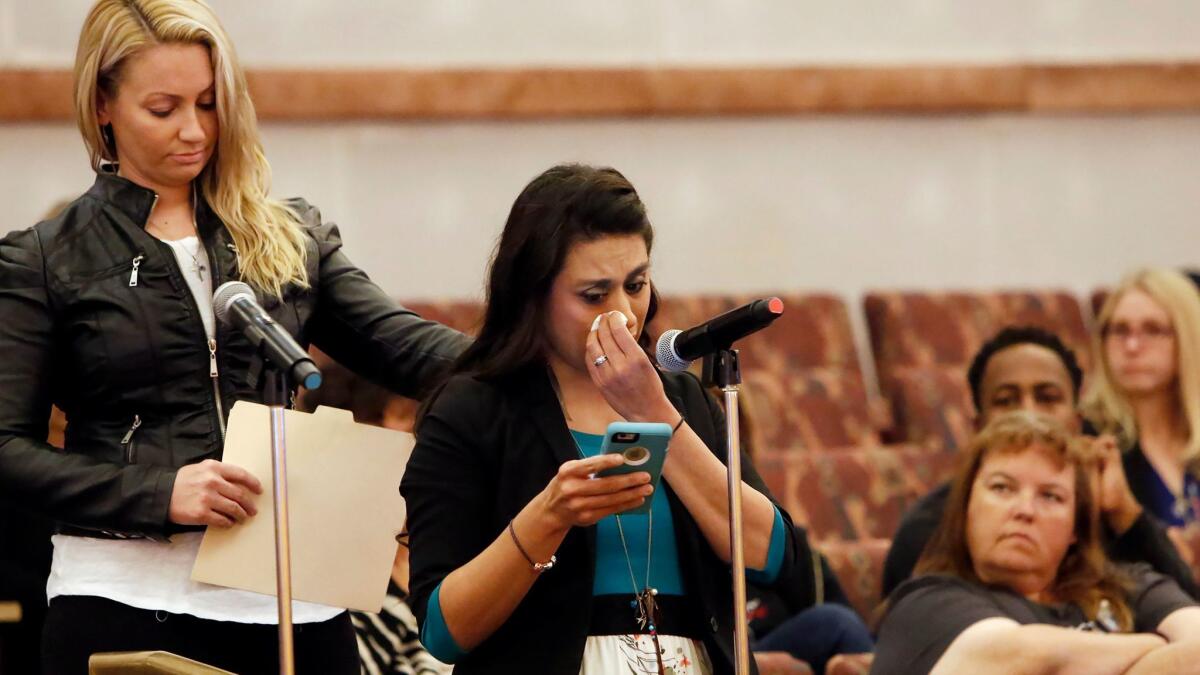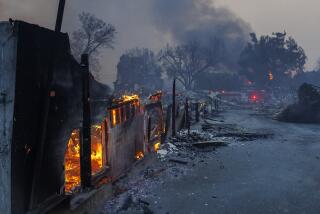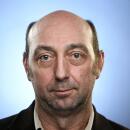Las Vegas victims’ fund has raised $22 million — but it’s not enough, so thousands will get nothing

- Share via
Reporting from Las Vegas — The Las Vegas committee overseeing the millions of dollars donated after the mass shooting in October has expanded the scope of those that could make a claim on money, but thousands will remain ineligible to receive any cash under the final guidelines.
Scott Nielson, chairman of the Las Vegas Victims Fund Committee, says the fund has $22 million, but that the large number of those affected by the mass shooting makes it impossible to provide everyone with a cash payout.
“It is our desire to recognize and honor all of those whose lives have been forever altered as a result of the horrific events of 1 October and we recognize the incredible needs of those experiencing psychological trauma,” Nielson said in a statement Friday.
“The overwhelming number of victims prevents us from providing individual monetary payments to those suffering psychological trauma, though we are committed to identifying mental health services to assist this critical segment of the survivor population,” he added.
Fifty-eight people were killed and hundreds more injured when 64-year-old Stephen Paddock fired into a crowd of about 22,000 during the Route 91 Harvest country music festival on the night of Oct. 1. It was the deadliest mass shooting in modern American history.
With so many victims, more donations would be needed to cover everyone who suffered emotional trauma or visited a doctor after Oct. 10 for injuries.
Christine Caria, 49, who was trampled trying to escape the gunfire coming from the 32nd floor of the Mandalay Bay hotel, said she recently moved to Las Vegas and had trouble getting a doctor’s appointment for torn ligaments in her leg and a wrenched back by the Oct. 10 deadline set in the new protocols.
She also is seeing a counselor for post-traumatic stress disorder, but that isn’t covered under the final guidelines established by the committee. Caria credited the committee for expanding the coverage from an earlier draft, but hoped it would now try to aggressively raise funds to help others.
“I think the final protocols were an attempt to do better,” she said. “They definitely listened to us, and I think they did the best they could. There just isn’t enough money.”
Those who will receive the highest level of payment from the fund include claims related to individual deaths and those who sustained permanent brain damage or permanent paralysis requiring continuous home medical care. Payment amounts have not been set.
The second level will include people physically injured on or before Oct. 10 who were hospitalized between the night of the shooting and Dec. 15.
The final category are those who were physically injured and were treated on an emergency or outpatient basis on or before Oct 10.
The final draft of the guidelines acknowledges that many people wouldn’t get money.
“While it is not feasible to distribute money from the Fund to all of the individuals impacted by 1 October, it is important to recognize that the criteria set forth in this Final Protocol is by no means intended to devalue or minimize the trauma that has been experienced by a great many,” the document reads.
The $22 million raised lags behind donations made after the Pulse nightclub shooting in Orlando, Fla., in 2016. Forty-nine people were killed and nearly 60 wounded.
The One Orlando Fund disbursed $27 million — with more than $17 million going to families of those who died in the massacre. Those who spent time in a hospital were eligible for between $65,000 and $300,000.
But unlike the Las Vegas Victims Fund, 186 people who were present at the nightclub but weren’t hospitalized for injuries received $25,000 each.
The Arrowhead United Way’s fund for the San Bernardino shooting in 2015 that left 14 dead and 24 injured had $2.4 million to distribute to victims. Relatives of those who died got $140,000 and the two dozen injured got a base amount of $5,000, plus $1,000 for each night spent in a hospital.
There were 37 others present during that shooting, and each was eligible for $2,993.
Experts have said the Las Vegas shooting came as the nation was reeling from three hurricanes that hit Texas, Florida and Puerto Rico and the wildfires that devastated Northern California. A mass shooting in Texas may have also contributed to “compassion fatigue” and an overwhelming news cycle that pushed the Vegas shooting out of the spotlight more quickly than normal.
Nielson says the committee is accepting donations through the end of January.
Twitter: @davemontero
More to Read
Sign up for Essential California
The most important California stories and recommendations in your inbox every morning.
You may occasionally receive promotional content from the Los Angeles Times.











